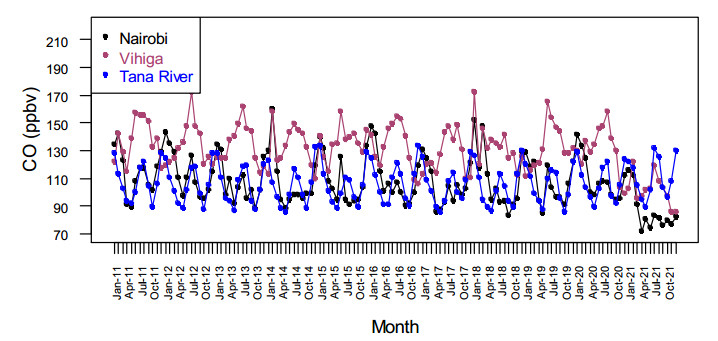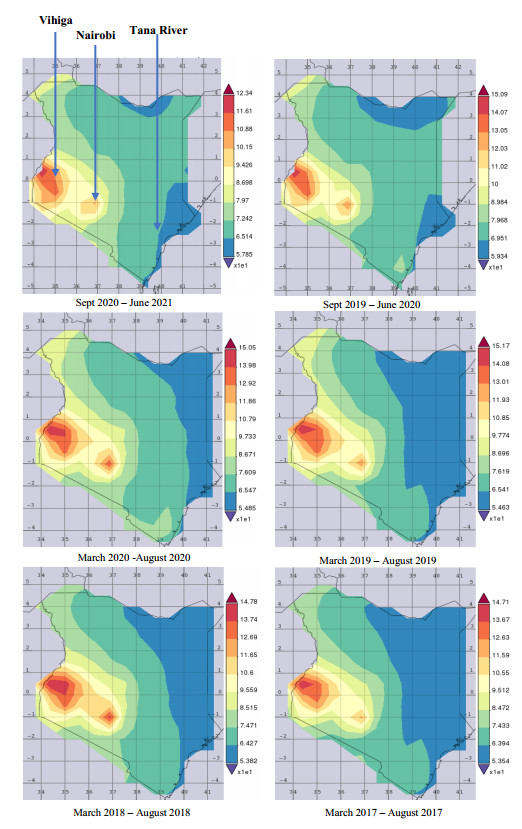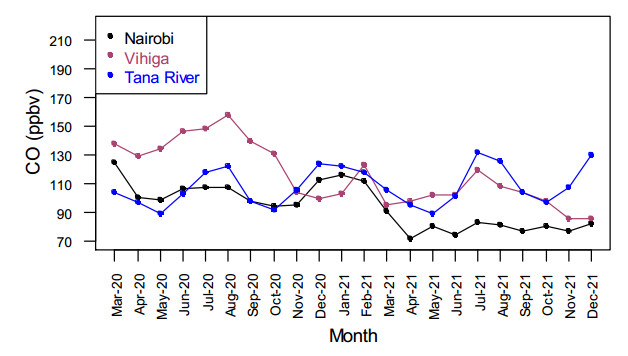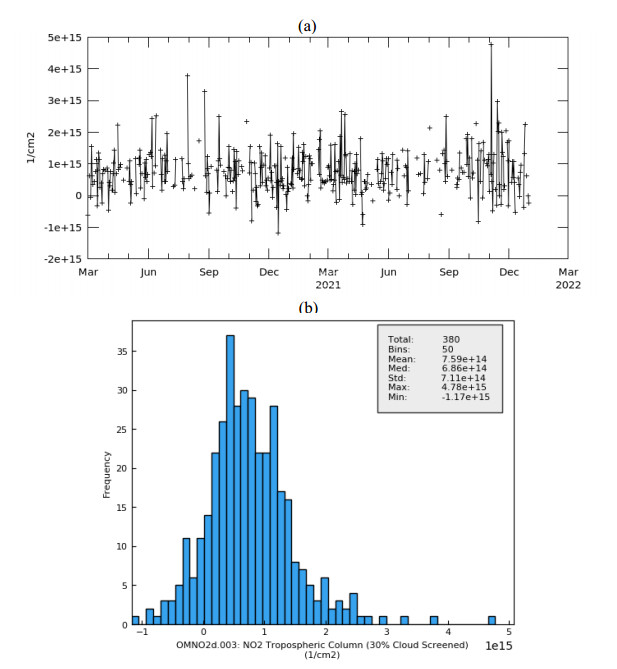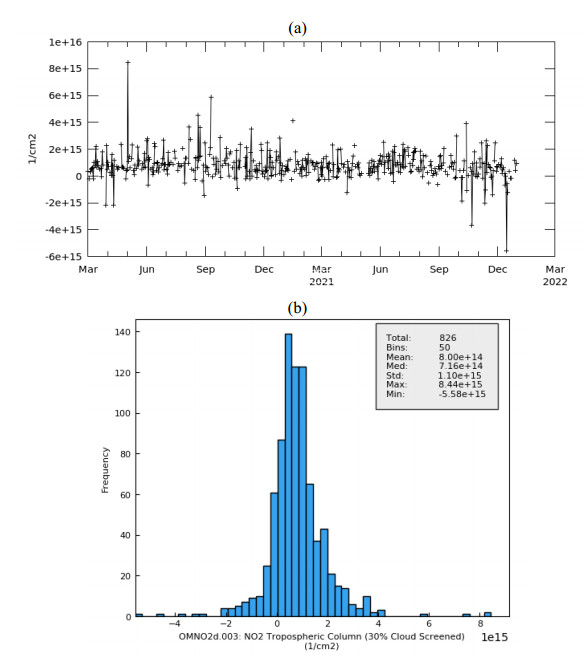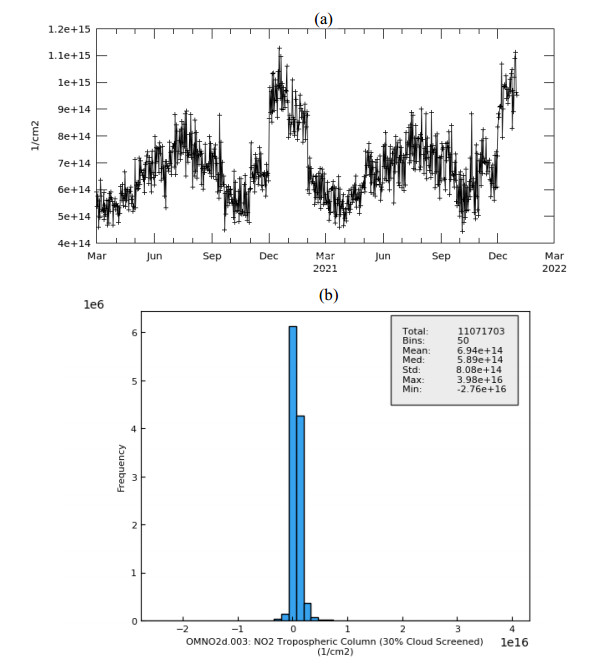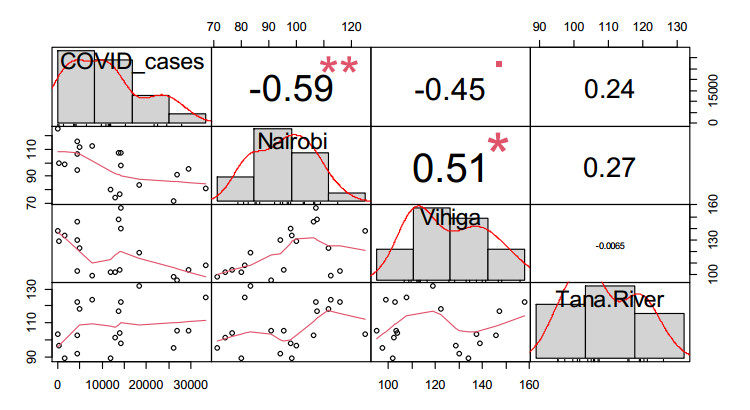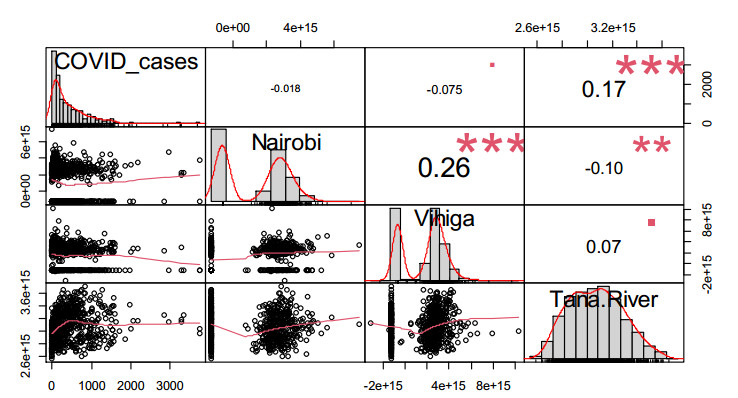1.
Introduction
Carbon monoxide (CO) and nitrogen dioxide (NO2) released into the atmosphere from energy use and other anthropogenic activities play a critical role in global and local atmospheric chemistry. Biomass burning for home energy use has been a primary environmental health concern in developing countries, and it has been attributed to increased atmospheric pollution. One of the common gases measured in cookstove and air pollution exposure studies is CO. This is due to its association with adverse health effects and birth outcomes, such as low birth weight [1]. In addition, it is considered an indirect greenhouse gas due to its close coupling to atmospheric methane, a potent greenhouse gas [2,3]. It is also hazardous to human health if inhaled, and one of the few ambient air pollutants known to exist in a biologically toxic form, i.e., carboxyhaemoglobin. Ambient daily CO levels have been associated with increased daily mortality and hospital admissions [4]. Another major environmental pollutant produced primarily from fossil fuel combustion is NO2 [5]. Some of the environmental effects of NO2 include ground-level ozone (smog) [6] and the formation of toxic nitric acid [7]. Its associated derivatives (NOx) have also been linked to an increased risk of lung cancer in humans [8,9].
A novel disease, later named Coronavirus disease 2019 (COVID-19), was discovered in patients in Wuhan, China in December 2019 [10,11,12]. The disease rapidly spread worldwide, and, on March 11, 2020, the World Health Organization (WHO) declared it a global pandemic. Stringent measures were put in place by governments across the world to isolate cases and stop the virus' rapid transmission. The measures imposed include isolation of infected individuals, a ban on public and private mass gatherings, enforcement of strict quarantines, social distancing, imposing curfews, mandatory home confinement and lockdown. These government policies have drastically altered energy demand and consumption patterns, and may unintentionally bring about social and environmental merits and demerits [13]. For instance, population confinement and curfews may lead to drastic energy use changes, impacting CO and NO2 emission levels, thus affecting air pollution.
The overall objective was to examine the effects of COVID-19 preventive measures on atmospheric CO and NO2 levels in Kenya's urban and rural areas. The study focused on CO and NO2 because both are air pollutants related to energy use for transport and households, and their emissions could be substantially affected due to reduced traffic and home quarantining. This study was purposed to explore CO and NO2 trends in the selected study areas and perform a comparative analysis for the different demographic zones, with emphasis on the COVID-19 period. In Kenya, the first COVID-19 case was reported on March 14, 2020. As a result, the government issued various directives, including the closure of international border entry and exit points, enforcement of a dusk-to-dawn curfew, lockdown of hotspot zones, closure of all schools, suspension of unnecessary gatherings and commercial activities and requirement for government employees to work from home [14,15]. However, some preventive measures were eased following a decreasing trend in the number of reported COVID-19 cases since August 2020. The study was designed based on the hypothesis that COVID-19 mitigation measures such as lockdown, a stay at home order, and imposed curfews would be associated with increased domestic energy use and decreased energy use in the transport sector, thereby affecting CO and NO2 levels.
2.
Data and methods
The study areas were selected to represent different demographic and environmental factors. Urbanisation and agricultural activities influence CO and NO2 concentration levels [16]. The study areas were Nairobi, Vihiga and Tana River counties, representing urbanised, high rural population and sparsely populated areas, respectively (Figure 1). According to the Kenya National Bureau of Statistics 2019 census, Nairobi county had 4.4 million people, Vihiga county had 590,013 people and Tana River county had 315,943 people. Nairobi and Vihiga counties form the foremost and third-most densely populated counties in Kenya, with population densities of 6,247 and 1,047 per square kilometre, respectively. Vihiga county, although rural, is more densely populated than most city/town counties in Kenya. On the other hand, Tana River county is the second least populated county in Kenya, with six people per square kilometre.
The study utilised data on daily reported COVID-19 cases archived by the Ministry of Health from March 14, 2020 to August 30, 2020. The number of reported COVID-19 cases informed the government decision to impose more stringent preventive measures or ease some of the already imposed measures. In February 2020, before a single case was reported in Kenya, the Ministry of Health advised maintaining basic hand and respiratory hygiene practices. However, with the surge in the number of COVID-19 cases, the authorities in Kenya extended the measures to include the closure of schools (March 15, 2020), lockdown of hotspot zones and cessation of movement (May 6, 2020). Monthly data on CO concentration for January 2010 to July 2020 were extracted from Giovanni, an online application containing different archived different parameters related to geophysical data. The data were collected by using the Modern-Era Retrospective analysis for Research and Applications, Version 2 (MERRA-2) model at a spatial resolution of 0.5 × 0.625°, which is less than each of the three study areas we considered. Daily data for CO surface concentration were available at a coarser spatial resolution (1°), hence our decision to use the monthly data. According to the Giovanni measurement definitions, the data represent the number of CO molecules in an atmospheric column from the earth's surface to the top of the stratosphere above a square centimetre of the surface [17]. Anthropogenic activities such as the burning of fossil fuels and the oxidation of hydrocarbons are responsible for CO production. The transport sector has been identified as a significant CO gas source [18]. Daily NO2 data for January 2010 to August 2020 were obtained with a spatial resolution of 0.25° from the ozone monitoring instrument (OMI) aboard NASA's Aura satellite. The data represent the number of NO2 molecules in the tropospheric column above a square centimetre of surface (1/cm2). Map analysis for CO and NO2 concentration in Kenya for 2017, 2018, 2019, 2020 and 2021 was also done. Emphasis was laid on March 2020 to December 2021 because the COVID pandemic was most prevalent in Kenya during this period.
Furthermore, gaseous atmospheric pollutants, including CO and NO2, follow seasonal patterns because of climate variation and different atmospheric conditions in different months. Pearson's moment correlation was used to determine the associations between reported COVID-19 cases and CO and NO2 concentration levels. Pearson's product-moment correlation measures the degree of the relationship between continuous variables [19,20]. The variables under investigation are continuous, hence the decision to use Pearson's product-moment correlation. The analysis was carried out in an R programming environment. This method has also been used in similar studies [21,22,23,24]. Tests for significance of the established relationships were also performed to account for the variation brought about by different sample sizes. This was expressed in probability levels (p), where p = 0.05 represents the critical value.
3.
Results
Seasonal variation of CO in Vihiga county has a peak during the period of June to August (Figure 2). December to February constitutes the season with high CO concentrations in the Nairobi and Tana River counties. CO-normalised values for Vihiga county were above average during the COVID-19 period. The NO2 tropospheric column did not indicate significant spatial variation as that of CO concentration (Plate 1). The Nairobi, Vihiga and Tana River counties experienced below long-term-average NO2 column concentration values during most of the period under consideration, with more variability in Nairobi and Vihiga than Tana River (Figures 4, 5 and 6). The satellite images for NO2 column concentration did not portray observable changes across the seasons considered [25].
Since discovering the first COVID-19 case in Kenya on March 12, 2020, the country strengthened measures to ensure no further transmission of the disease. However, the number of reported COVID-19 cases rose from March 14, 2020, reaching a peak in December of 2021. There were other peaks in July and November of 2020, and in March and August of 2021 (Figure 7). The country witnessed five COVID-19 peaks between March 2020 and December 2021 (Figure 7).
Correlation analysis for COVID-19 cases and CO concentration revealed a negative effect of COVID-19 on CO levels in Vihiga and Nairobi counties, at −0.45 (P-value, 0.05) and −0.59 (P-value, 0.008), respectively (Figure 8). For Vihiga county, there is only a 5% chance that the tested sample results occurred due to chance, while there is 0.8% chance for Nairobi. These results suggest a decrease in CO concentration levels with increasing COVID-19 cases in Vihiga and Nairobi counties during the COVID-19 pandemic. Vihiga county's findings are also consistent with those obtained by Faridi et al. [26,27,28], who reported positive effects of COVID-19 on ambient air quality. The dorrelation between COVID-19 cases and CO levels in Tana River was −0.24 (P-value, 0.33), which was statistically insignificant because of the high P-value. The county has a sparse population, and the emitted CO is generally spread over vast areas, reducing its concentration.
The spatial distribution in Plate 1 shows an increase in Tana River county's CO levels, and a reduction in those of Vihiga and Nairobi compared to the last three similar seasons. The data for the period of September 2020 to June 2021 shows an observable change in CO surface concentration levels compared to the previous period (September 2019 to June 2020). However, NO2 tropospheric column concentration data did not indicate significant spatial or temporal changes across the country. The correlation between the NO2 in the three counties and the number of COVID cases yielded correlation coefficients of −0.018 (P-value, 0.63), −0.075 (P-value, 0.0508) and 0.17 (P-value, 0.00) for Nairobi, Vihiga and Tana River counties, respectively. The correlation result for Nairobi was insignificant, while those for Vihiga and Tana River were significant (Figure 9). Although the correlation coefficient for Vihiga county and NO2 tropospheric column concentration was very low, a P-value of 0.0508 implies that the null hypothesis cannot be accepted. Therefore, the correlation between COVID-19 cases and NO2 column concentration for Vihiga county was statistically significant. The direction of effect was negative for Vihiga county, and positive for Tana River county.
4.
Discussion
The trends in CO concentration levels between January 2010 and June 2020 indicate seasonality for the Nairobi, Vihiga and Tana River counties. CO and NO2 concentrations vary considerably across the globe, with much seasonal variability due to wide variation in activities such as agricultural burning, biomass burning and internal combustion engine use [29,30]. For this reason, the data were deseasoned before performing correlation analysis. In cities such as Nairobi, CO and NO2 concentrations are spatially heterogeneous due to high traffic on roads. In rural areas, indoor air may be contaminated with high CO levels due to kerosene stoves and biomass burning, which cause significant CO emissions. Indoor NO2 levels are also dependent upon the type of fuel, season and agro-ecological conditions [31,32]. An increasing number of studies have found a correlation between indoor air pollution and outdoor air pollution [23,33,34,35,36]. Consequently, increased indoor CO and NO2 concentration from household energy directly influence outdoor concentration levels of these gases, especially in rural areas with a high prevalence of biomass use for energy. Vihiga county had relatively higher CO concentration levels than the Nairobi and Tana River counties throughout the period under consideration (Plate 1).
Population density has been found to affect carbon emission rates [37]. Also, the type of fuel used determines the emissions factors. Urban residents have access to clean energy sources for household energy needs, while rural households rely on biomass. Biomass burning is the second-largest source of trace and primary fine carbonaceous particles in the troposphere [38]. This explains the relatively high CO concentration levels in Vihiga county compared to Nairobi and Tana River. Among anthropogenic activities, the main contributor to NO2 is road transport [39]. The nationwide lockdown led to decreased transport activities and the shutting down of plants and industries, thus resulting in drastic decreases in GHGs and NO2 and CO concentration levels. Other studies have also reported a reduction in NO2 during the COVID-19 period [40,41,42,43,44].
Some of the measures enforced include a dust-to-dawn curfew, the restriction of movement into and out of some counties, and a requirement that workers in public and private sectors work remotely. These measures imply energy use in two ways. First, the restricted movement led to a decrease in urban mobility, which decreased the transport sector's energy use. Second, the enforced measures meant that people would spend more time within their homestead than before, which increased domestic energy use while also decreasing transport energy use. In general, more densely populated urban areas are associated with smaller housing sizes, and thus, higher carbon emissions [45]. In rural areas, decreased energy use during the COVID-19 pandemic also decreased CO concentration levels. In urban areas, CO emissions were cut in the transport sector and industries due to decreased mobility and depressed industrial activities.
5.
Conclusion
These findings suggest that CO concentration levels and NO2 tropospheric column concentration were depressed in urban and rural areas due to COVID-19 measures. The COVID-19 effects on CO concentration levels were more potent in densely populated rural areas and urban areas than in sparsely populated rural areas. Densely populated rural areas and urban areas exhibited a stronger negative correlation between COVID-19 cases and CO concentration levels. The negative association between COVID-19 and CO levels in urban areas is attributed to decreased mobility, while many urban areas use clean energy. During the COVID-19 pandemic lockdown (March 2020 to August 2020), with the exception of a few isolated cases, NO2 anomalies were below the long-term average for the three study areas. This is primarily due to a reduction in emissions in the transport sector. However, satellite images highlighted the constant spatial and temporal variation of NO2. The slight changes in NO2 may not have been significant enough to be observed. The association between COVID-19 cases and NO2 were insignificant for Nairobi, but significant for the Vihiga and Tana River counties. These findings are consistent with those of similar studies. However, the results highlight the need for demographic and economic considerations in CO and NO2 assessments. These findings allude to the possibility of public health risk mitigation by reducing emissions from economic activities in both urban and rural areas. The findings also provide a baseline for needed efforts to enhance the incorporation of a climate-smart bioenergy agenda in Kenya. In densely populated rural areas, a policy question is whether clean energy should be effectively promoted during this COVID-19 pandemic. This study's limitation is the unaccounted meteorological and environmental factors that could affect ambient CO and NO2 concentration levels.
Acknowledgements
The authors would like to acknowledge the Kenya Climate-Smart Agriculture Project (KCSAP) for financial support under KCSAP scholarship. The authors acknowledge Long Pham (NASA) and M. Hedge for using the Giovanni online data system to generate the data that were used in this study. We also acknowledge the MODIS mission scientists and associated NASA personnel for the production of the data used in this research effort.
Conflict of interest
The authors declare no conflict of interest.
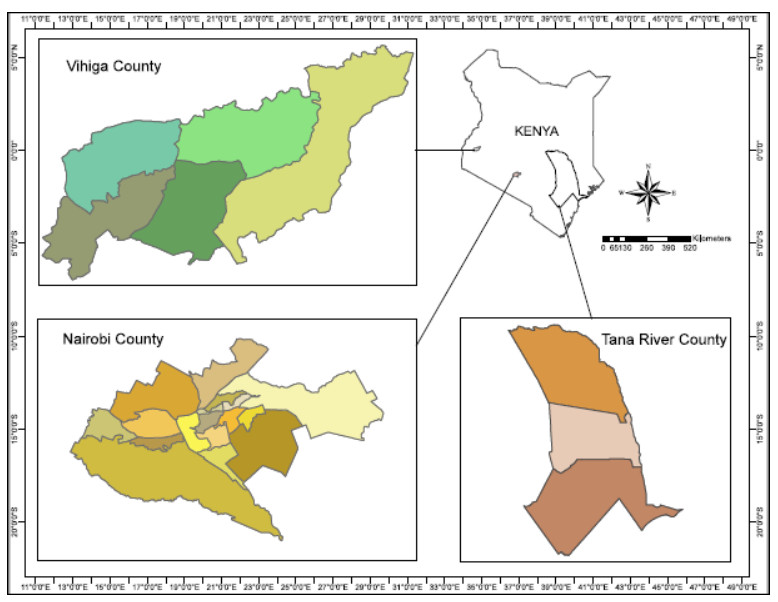









 DownLoad:
DownLoad:
